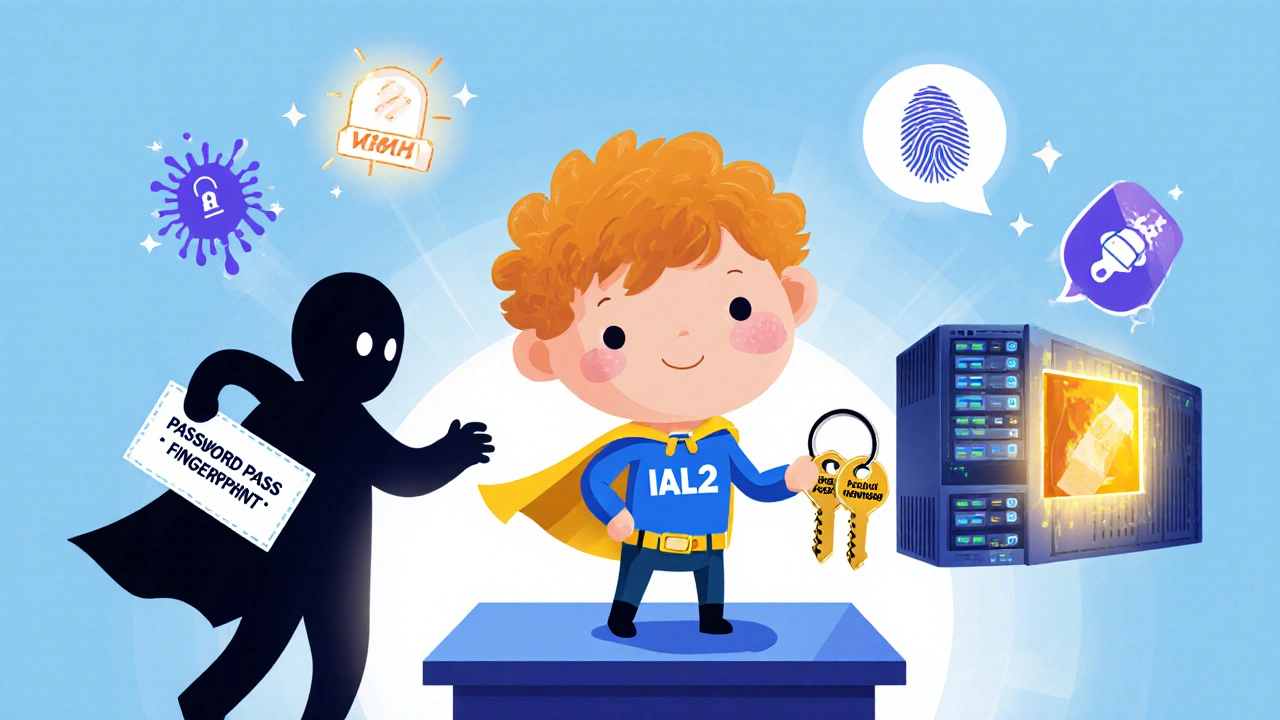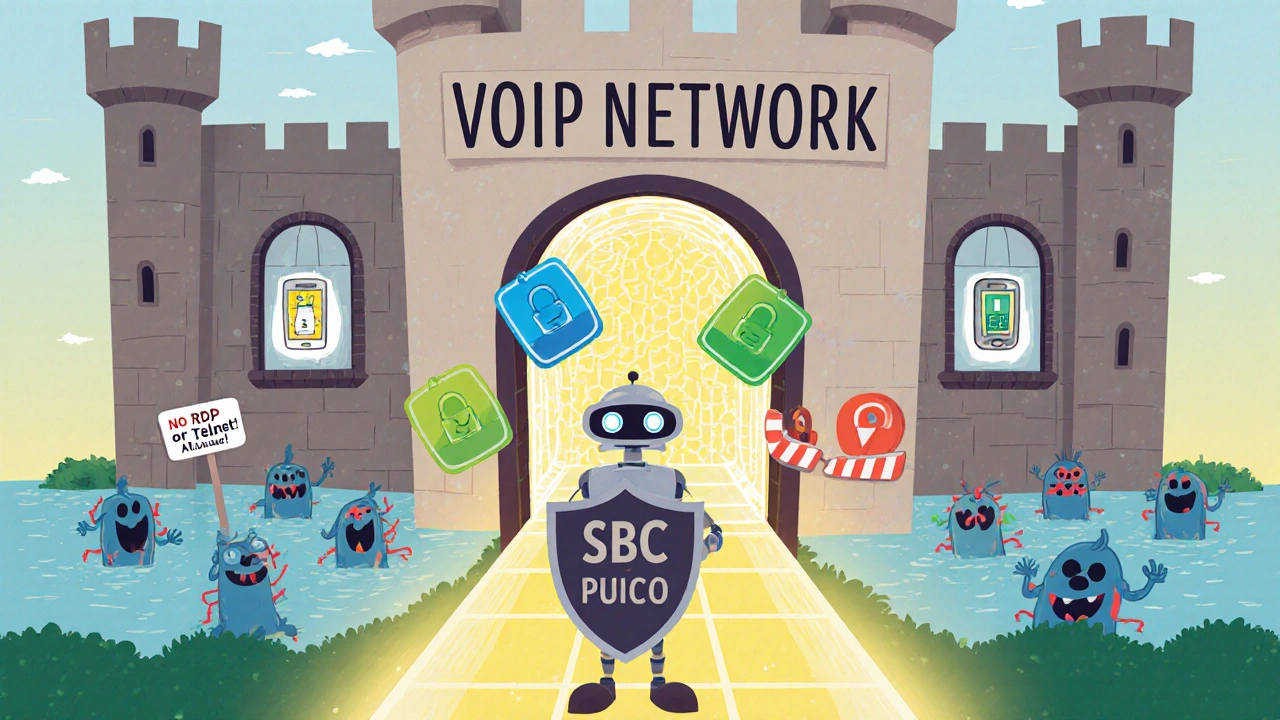Why VoIP Security Can’t Be Ignored
VoIP isn’t just a phone replacement-it’s a network service that carries your business conversations, customer data, and sometimes even classified information. If your VoIP system is misconfigured, attackers can eavesdrop on calls, hijack extensions, or launch toll fraud that costs thousands. The NIST VoIP security guidelines, especially SP 800-58, exist because traditional network security tools don’t work for voice traffic. Firewalls built for web traffic can’t understand SIP signaling. Encryption meant for files won’t keep real-time calls safe. Without the right controls, your voice system is wide open.
NIST SP 800-58: The Foundation of VoIP Security
Published by NIST’s Computer Security Division, SP 800-58 is the go-to document for securing Voice over IP systems. It doesn’t just say "use encryption"-it tells you exactly how and where. The guide breaks down the three main VoIP protocols: SIP, H.323, and MGCP/H.248. SIP is now the most common, but many older systems still use H.323. Each has different vulnerabilities. For example, SIP messages can be intercepted if not signed or encrypted, and H.323 endpoints often lack built-in authentication.
NIST makes it clear: don’t rely on standard firewalls. You need specialized tools. Session Border Controllers (SBCs) are non-negotiable. They sit at the edge of your network, filtering VoIP traffic, blocking malformed packets, and enforcing encryption policies. If you don’t have one, you’re leaving your voice system exposed. The guide also warns against using Application Level Gateways (ALGs) for VoIP-they’re outdated, buggy, and often break call quality.
For remote access to your IP PBX or VoIP server, NIST demands IPsec or SSH. No exceptions. If someone can log into your system via RDP or Telnet from the internet, you’re asking for trouble. Even if your PBX is on a private network, assume it’s under attack. Use multi-factor authentication where possible. And if you can, avoid remote access entirely. Log in from a physically secure machine instead.
Encryption: Where and How
Encrypting VoIP traffic sounds simple, but it’s tricky. Many endpoints-like desk phones or softphones on old laptops-can’t handle heavy encryption without lag or dropped calls. NIST’s solution? Encrypt at the gateway, not the device. Use IPsec tunnels at your router or SBC to protect all voice traffic between sites. This keeps the endpoints simple and still secures the data.
For signaling, use TLS to protect SIP messages. For media, SRTP (Secure Real-time Transport Protocol) encrypts the actual voice packets. Don’t skip this. A simple packet sniffer on your network can capture unencrypted calls. In 2025, with AI tools that can transcribe and analyze audio in real time, that’s a data leak waiting to happen.
Key management is the hidden problem. If you’re using certificates for TLS or SRTP, you need a system to rotate them, track expiry, and revoke compromised ones. Many organizations fail here. They issue certs and forget them. NIST recommends centralized key management systems-like a PKI server or cloud-based certificate authority-so you’re not managing keys manually on dozens of devices.

NIST SP 800-171: When VoIP Handles Sensitive Data
If your company works with the U.S. government-or handles Controlled Unclassified Information (CUI)-SP 800-171 applies. This isn’t optional. It requires you to protect CUI on any system that stores, processes, or transmits it. That includes your VoIP system if employees use it to discuss contract details, project timelines, or proprietary data.
Here’s the catch: you don’t have to secure your entire VoIP network. If only a small team handles CUI, you can create a logically or physically isolated security domain. For example, give that team dedicated phones, a separate VLAN, and a restricted SIP trunk. All other employees use the regular system. This reduces cost and complexity while meeting compliance.
But even if you’re not required to follow SP 800-171, you should still apply its principles. A breach that doesn’t leak CUI can still ruin your reputation. Customers expect secure communication. Regulators are watching. And attackers don’t care if your data is "classified"-they’ll sell your call logs to competitors or use them in social engineering.
SP 800-53 Rev. 5: Cloud VoIP and Virtual Machines
If your VoIP system runs in the cloud-like Microsoft Teams, Zoom Phone, or a hosted PBX-you need to look at SP 800-53 Revision 5. This guide covers controls for virtualized environments. For example:
- Disable IP forwarding on virtual machines running VoIP software.
- Use just-in-time access for management ports-no permanent open SSH or RDP ports.
- Close all unused ports on cloud-based VoIP servers.
- Apply network security groups to isolate voice traffic from general data.
These aren’t suggestions-they’re requirements for federal contractors and many enterprise cloud users. Microsoft Azure’s compliance tools now map these controls directly to VoIP deployments. If your cloud provider doesn’t support them, you’re not compliant. And if you’re using BYOD or mobile VoIP apps, SP 800-124r2 applies. It says mobile devices connecting to your network must be managed, encrypted, and monitored. A lost phone with a softphone app and no passcode is a security incident.
Authentication: Not Just a Password
NIST SP 800-63-3 defines Identity Assurance Levels (IAL) for digital authentication. For VoIP, you need at least IAL2: proof that the person logging in is who they claim to be. That means more than a username and password. Use multi-factor authentication (MFA) for admin access to your PBX. For users, consider certificate-based authentication or biometrics on softphones.
IAL3-physical identity proofing-is overkill for most offices. But if you’re in defense, finance, or healthcare, and your VoIP system handles sensitive calls, IAL3 might be necessary. That means requiring employees to show ID in person before getting access to a secure voice line.
Don’t underestimate the power of weak passwords. A 2024 industry survey found that 68% of VoIP breaches came from default or reused credentials-not hacking tools. Change every default password. Enforce 12-character passwords with complexity. Rotate them every 90 days. And disable unused accounts. A ghost account with a weak password is an open door.

Common Mistakes and How to Avoid Them
- Using unsecured SIP trunks: Always require TLS for SIP signaling. Never allow plain SIP over the internet.
- Ignoring firmware updates: VoIP phones and PBXs get vulnerabilities like any other device. Patch them quarterly.
- Leaving VoIP ports open: Port 5060 (SIP) and 5061 (SIPS) should only be accessible from trusted sources.
- Not logging VoIP activity: Enable audit logs on your SBC and PBX. Review them monthly for failed logins or unusual call patterns.
- Assuming VoIP is "just voice": VoIP systems often integrate with CRM, email, and helpdesk tools. Secure those connections too.
What’s Next? The Future of VoIP Security
NIST hasn’t released a new SP 800-58 yet, but the industry is changing fast. WebRTC is replacing traditional softphones. AI-generated voice spoofing can mimic executives to trick employees into transferring money. Cloud-native VoIP services like Microsoft Teams and Google Meet now handle enterprise traffic at scale.
Expect NIST to update its guidance soon to address these threats. Until then, stick to the core principles: encrypt at the edge, control access tightly, verify identities, and assume your network is already compromised. Build security in from the start-not as an afterthought.
Final Checklist for VoIP Security
- Deploy a Session Border Controller (SBC) at your network perimeter.
- Use TLS for SIP signaling and SRTP for media encryption.
- Encrypt VoIP traffic at the gateway, not the endpoint.
- Require MFA for all administrative access.
- Use IPsec or SSH for remote management-never RDP or Telnet.
- Apply SP 800-171 controls if you handle CUI.
- Disable unused ports and services on VoIP devices.
- Update firmware regularly.
- Log and monitor VoIP activity.
- Train staff to recognize vishing (voice phishing) attacks.
VoIP security isn’t about buying the fanciest gear. It’s about doing the basics right-and consistently. If you follow NIST’s guidance, you’re already ahead of most organizations. Don’t wait for a breach to realize your voice system was vulnerable. Start securing it today.
Is NIST SP 800-58 still relevant in 2025?
Yes. Although SP 800-58 was published years ago, its core principles-using SBCs, encrypting signaling and media, securing remote access, and avoiding ALGs-are still the foundation of VoIP security. NIST hasn’t replaced it, and cybersecurity experts continue to reference it as the baseline for secure VoIP deployments. Newer documents like SP 800-53 Rev. 5 and SP 800-124r2 build on it, but don’t override it.
Do I need SP 800-171 if I don’t work with the government?
No, SP 800-171 only applies if your VoIP system handles Controlled Unclassified Information (CUI)-typically government contract data. But even if you’re not required to follow it, many of its controls (like strong authentication, network segmentation, and patching) are industry best practices. Adopting them reduces risk and builds trust with clients.
Can I use a regular firewall for VoIP?
No. Standard firewalls can’t interpret SIP or H.323 signaling. They may block calls, cause one-way audio, or fail to detect VoIP-specific attacks. You need a Session Border Controller (SBC) designed for VoIP. It understands the protocols, enforces encryption, and filters malicious traffic without breaking call quality.
What’s the difference between SIP and H.323?
SIP (Session Initiation Protocol) is simpler, text-based, and widely used today-especially with cloud VoIP services. H.323 is older, more complex, and binary-based, common in legacy systems. SIP is easier to integrate with web technologies, while H.323 has stronger built-in security features in some implementations. But both need TLS and SRTP for encryption. NIST recommends SIP for new deployments due to its flexibility and ecosystem support.
How do I secure mobile VoIP apps?
Use Enterprise Mobility Management (EMM) tools to enforce device encryption, passcode policies, and remote wipe. Install only approved VoIP apps. Avoid public Wi-Fi for sensitive calls. Enable MFA for login. NIST SP 800-124r2 recommends using secure containers or mobile application management to isolate corporate voice traffic from personal data on the device.
Should I encrypt VoIP traffic on every phone?
No-NIST recommends encrypting at the gateway (router or SBC) using IPsec tunnels instead. Many VoIP phones, especially older models, lack the processing power for real-time encryption without lag or dropped calls. Gateway encryption protects all traffic without impacting endpoint performance. Only encrypt at endpoints if you have modern, powerful devices and no other option.
What’s the biggest risk in VoIP security?
Misconfiguration. A 2024 survey found 68% of VoIP breaches came from default passwords, open ports, or unpatched firmware-not advanced hacking. Attackers don’t need zero-day exploits. They just need to find a phone with the factory password still set. The fix? Regular audits, automated patching, and strict access controls.
Does NIST recommend any specific vendors or tools?
No. NIST doesn’t endorse products. It provides technical requirements-like using SBCs, TLS, and SRTP-that any vendor can meet. Choose tools that support these standards and have independent security certifications. Look for vendors that reference NIST guidelines in their documentation.
